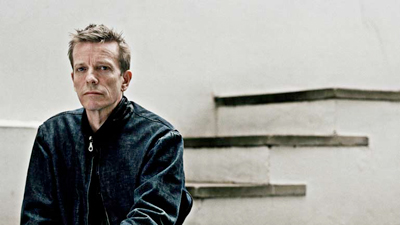by Jeremy Reynolds
In 1935, Frances Bolton acquired the Cleveland Museum of Art’s first film projector and began hosting screenings of works by prominent filmmakers. Now, 80 years later, the program is still going strong, with around 90 annual screenings of historic and avant-garde movies alike. According to the Museum’s website, the program is one of the oldest in the nation, and it continues to draw thousands of patrons over the course of the year.
On Friday evening, June 19, a modest crowd gathered in Morley Lecture Hall in the Museum. A projection screen hangs in the front of the hall, with speakers dotted around the room to provide an optimal surround sound experience. At precisely 7:00 pm, the lights dimmed and the night’s program began, though latecomers continued to trickle in.
A heroic saga, The Epic of Everest details the third attempt to summit the highest peak on Earth. John Baptist Lucius Noel directed the black-and-white film, originally shot with a hand-cranked camera in 1924. Climbers George Mallory and Andrew Irvine both perished less than a thousand feet from their goal, but this documentary lives on, both as a testament to their bravery in the face of nature’s awesome might and as the earliest filmed record of Tibetan life.
The British Film Institute restored the 87-minute silent film and commissioned an original musical score by composer Simon Fisher Turner (pictured above), begging the question: does an originally silent film need a musical score?
The movie opens with several screens of subtitles explaining the history behind Irvine’s and Mallory’s expedition, then transitions into about five minutes of different shots of Mount Everest in all its frigid splendor. Turner’s score makes use of a soft rhythmic accompaniment (vibes) and an expansive saxophone solo that never seems to lead anywhere, oscillating around only a couple of diatonic chords. The music is sparse. Wonderful. The aural minimalism beautifully contrasts the mountain’s austere grandeur.
But once the story begins in earnest, the saxophone disappears, replaced by the sounds of traditional cup gongs and prayer bowls, indicating the anthropological nature of the documentary. The alternation between panoramic and close-up scoring creates an unusual pace for the film.
While the story within The Epic of Everest clearly progresses in both time and location as the climbers slowly scale the mountain, Turner’s music remains aloof. The music is largely similar throughout — rhythmic ostinatos on a chord, sound effects, and, sometimes, an overlaid solo. At other moments, it zooms in to highlight a specific incident before returning to its customary opaqueness.
The basic soundscape consists of wind sound effects, mallet percussion, and strings, with occasional piano, brass, and vocals tossed into the mix for variation. Long, sustained tones avoid sounding anything like a melody, while quick rhythmic patterns often outline the same chord for minutes at a time.
As in the opening, this orchestration works best with the isolated shots of the mountain. A particularly beautiful piano solo (that remains on an e minor chord for about six minutes) strikingly complements the mountaineers’ trek through a section of blue ice (here, the film is tinted). The brass occasionally punctuate the images of Everest, adding a sense of nobility.
The scoring for specific moments is also convincing at times. During the shots of a newborn donkey taking its first steps, the score suddenly loses its austerity and turns tender for a few moments. A softly plucked acoustic guitar accompanies portraits of Mallory and Irvine just after their untimely deaths.
But overall, the soundtrack adds little to the already awe-inspiring film. Turner’s occasional nods to the onscreen action — a dog barking here, the traditional music of a Tibetan festival there — don’t quite overcome the general lethargy of his score. More silence to let the visuals sink in could have alleviated some of the difficulties. His music works well with individual shots, but doesn’t track with the narrative overall, and its lack of direction clashes with the firm purpose of the mountaineers. In a film filled with hope and courage, Turner’s spartan score could simply have used a little more heart.
To read our discussion with Turner about his work on “The Epic of Everest,” click here.
Published on ClevelandClassical.com June 24, 2015.
Click here for a printable copy of this article




